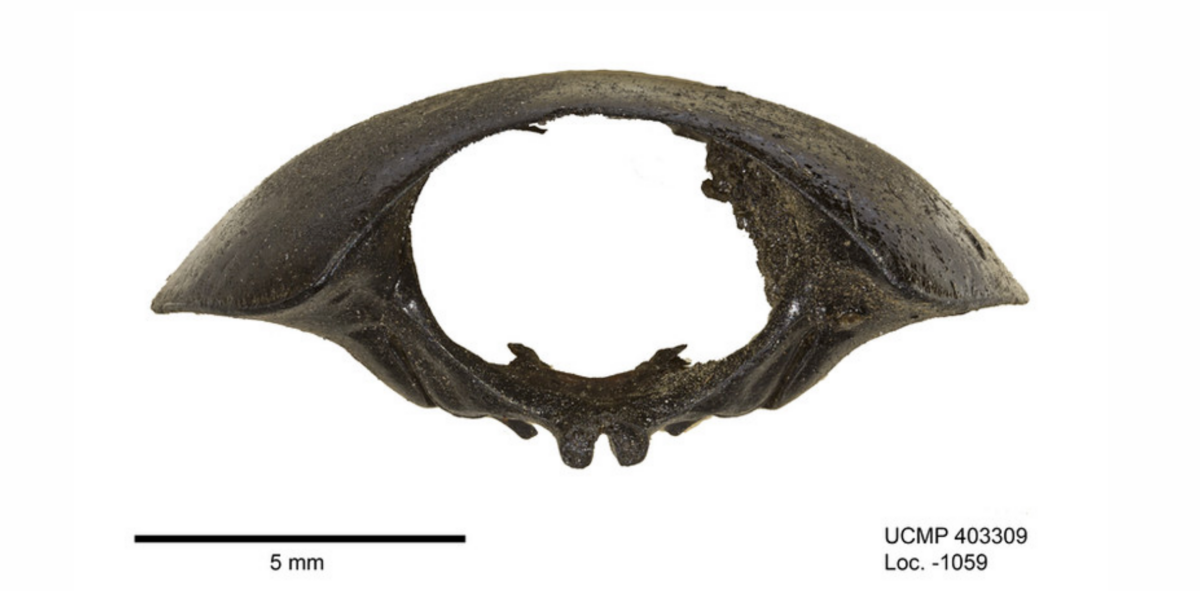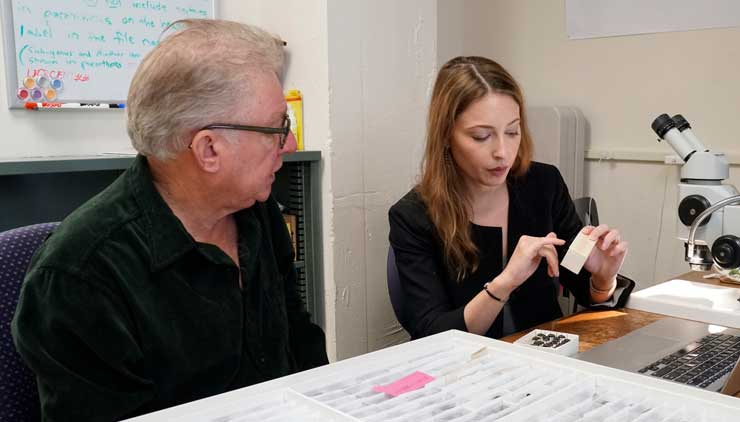Concept
Scientists usually work collaboratively.

Paleontologist Anna Holden is working to reconstruct the past climate of the Los Angeles Basin based on insect remains from the Rancho La Brea Tar Pits — a project that is anything but isolating. She explains,
I continue to work with over 30 entomologists from around the world to help me identify these insects. Social media helped start and develop these relationships. I took specimen photos myself, and then I thought to create a Flickr album using my images and those from online databases such as CalPhotos. Through CalPhotos, I was able to get the specimen records and high resolution images of tar pit insect specimens in the collection of the UC Museum of Paleontology, digitized by the UC Berkeley PEN fossil insect project. That album has been sent out through Facebook, Twitter, and email by many individuals and institutions — all to try to help me identify the many different fossil species. Of course, that not only grabs the attention of the entomologists and helps me, but also supports their personal research through the information offered by these fossils. Interacting with experts through social media this way really helped me become a part of the entomological community — which is so collaborative and generous. So many entomologists have helped me understand how to identify insects and become my mentors — and I’ve started getting invitations to visit institutions and present my work or to collaborate. Because some of the questions I’ve been investigating are really complex, it also takes a lot of scientists with different specializations to develop creative ways to examine these topics. For example, to understand what insects can tell us in terms of paleoclimatology, it took working with two insect specialists, an expert in radiocarbon dating, a paleoclimatologist, and a computer programmer. One person just can’t have all the knowledge needed from these disciplines, so you have to rely on a team.

Citation
- Holden, A. R., J. R. Southon, K. Will, M. E. Kirby, R. L. Aalbu, and M. J. Markey. (2017). A 50,000 year insect record from Rancho La Brea, Southern California: insights into past climate and fossil deposition. Quaternary Science Reviews. 168: 123-136.
